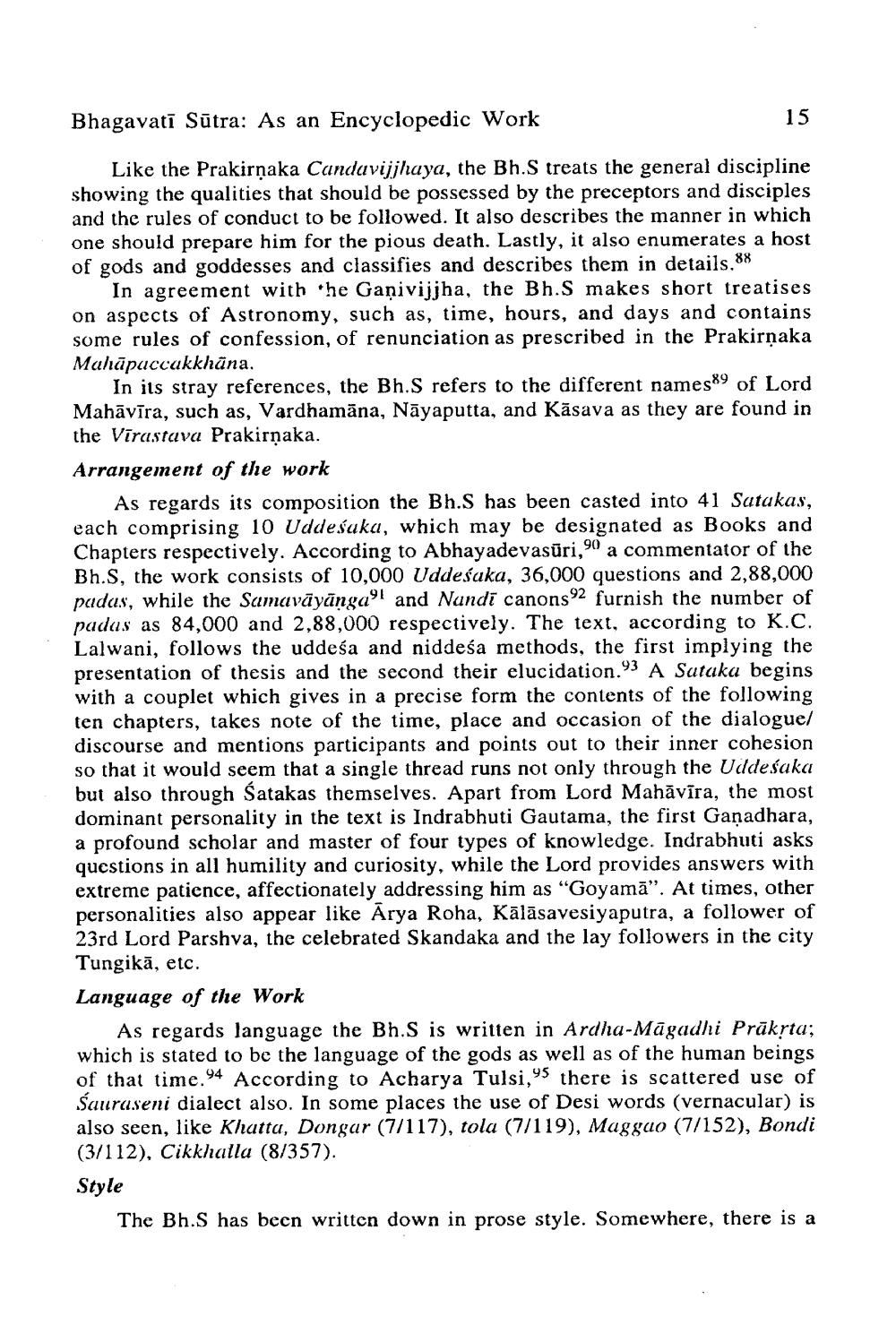________________
Bhagavati Sūtra: As an Encyclopedic Work
15
Like the Prakirņaka Candavijjhaya, the Bh.S treats the general discipline showing the qualities that should be possessed by the preceptors and disciples and the rules of conduct to be followed. It also describes the manner in which one should prepare him for the pious death. Lastly, it also enumerates a host of gods and goddesses and classifies and describes them in details. 88
In agreement with he Ganivijjha, the Bh.S makes short treatises on aspects of Astronomy, such as, time, hours, and days and contains some rules of confession, of renunciation as prescribed in the Prakirnaka Mahāpuccakkhāna.
In its stray references, the Bh.S refers to the different names89 of Lord Mahāvīra, such as, Vardhamāna, Nāyaputta, and Kāsava as they are found in the Virastava Prakirņaka. Arrangement of the work
As regards its composition the Bh.S has been casted into 41 Satakas, each comprising 10 Uddesaka, which may be designated as Books and Chapters respectively. According to Abhayadevasűri,90 a commentator of the Bh.S, the work consists of 10,000 Uddeśaka, 36,000 questions and 2,88,000 padas, while the Samavāyāngaol and Nandi canons92 furnish the number of padas as 84,000 and 2,88,000 respectively. The text, according to K.C. Lalwani, follows the uddeśa and niddeśa methods, the first implying the presentation of thesis and the second their elucidation.93 A Sataka begins with a couplet which gives in a precise form the contents of the following ten chapters, takes note of the time, place and occasion of the dialoguel discourse and mentions participants and points out to their inner cohesion so that it would seem that a single thread runs not only through the Uddeśaka but also through Satakas themselves. Apart from Lord Mahāvīra, the most dominant personality in the text is Indrabhuti Gautama, the first Ganadhara, a profound scholar and master of four types of knowledge. Indrabhuti asks questions in all humility and curiosity, while the Lord provides answers with extreme patience, affectionately addressing him as “Goyamā". At times, other personalities also appear like Ārya Roha, Kālāsavesiyaputra, a follower of 23rd Lord Parshva, the celebrated Skandaka and the lay followers in the city Tungikā, etc. Language of the Work
As regards language the Bh.S is written in Ardha-Māgadhi Prāksta; which is stated to be the language of the gods as well as of the human beings of that time. 94 According to Acharya Tulsi, 's there is scattered use of Sauraseni dialect also. In some places the use of Desi words (vernacular) is also seen, like Khattu, Dongar (7/117), tola (7/119), Magguo (7/152), Bondi (3/112), Cikkhalla (8/357). Style
The Bh.S has been written down in prose style. Somewhere, there is a




